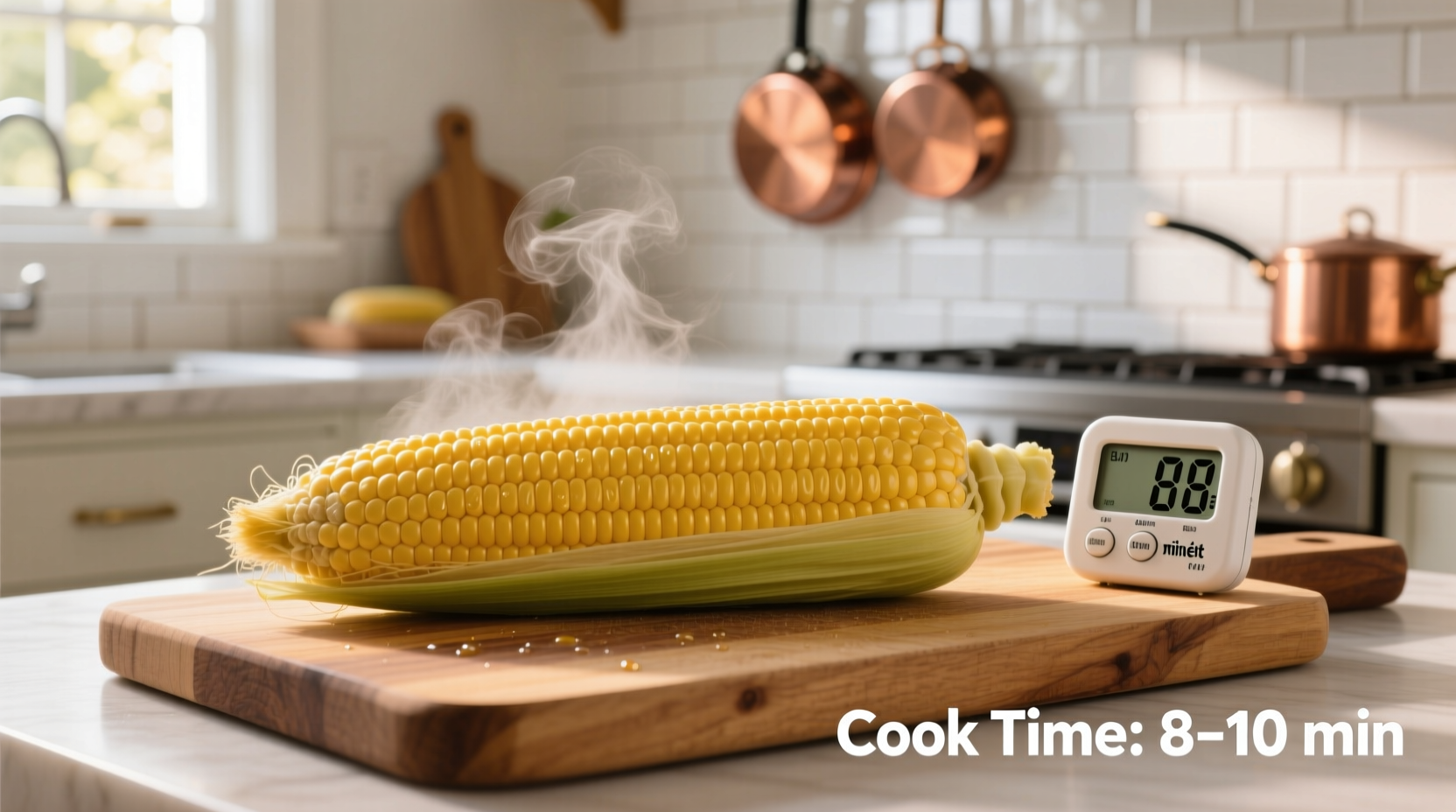Nothing says summer quite like perfectly cooked corn on the cob. But getting that ideal balance of tenderness without mushiness requires precise timing. Overcook it by just two minutes and you'll end up with kernels that lack that satisfying pop. Undercook it, and you'll be gnawing on tough, starchy corn. This guide delivers exact timing for every cooking method, plus professional techniques to ensure flawless results every time.
Boiling Corn: The Classic Method
Boiling remains the most popular method for cooking corn on the cob, especially when preparing multiple ears at once. Contrary to common belief, you don't need to add salt or sugar to the water—this can actually toughen the kernels.
Follow these steps for perfect boiled corn:
- Bring 6-8 cups of water to a rolling boil in a large pot
- Remove husks and silk completely
- Submerge corn in boiling water
- Cook for exactly 4-7 minutes (5 minutes for crisp-tender, 7 for softer corn)
- Remove with tongs and serve immediately
The USDA Agricultural Marketing Service confirms that boiling time should never exceed 10 minutes for fresh corn, as extended cooking converts sugars to starch, diminishing sweetness and texture.
| Cooking Method | Prep Time | Cooking Time | Best For |
|---|---|---|---|
| Boiling | 5 minutes | 4-7 minutes | Multiple ears, traditional preparation |
| Grilling | 10 minutes | 8-10 minutes | Smoky flavor, summer barbecues |
| Microwaving | 2 minutes | 3-4 minutes | Quick preparation, single servings |
| Steaming | 5 minutes | 6-8 minutes | Nutrient retention, delicate texture |
Grilling Corn for Smoky Perfection
Grilling corn creates delicious caramelized spots and a subtle smoky flavor that enhances the natural sweetness. Professional chefs at the Culinary Institute of America recommend two preparation methods:
- Husk-on method: Soak corn in cold water for 15-30 minutes, then grill over medium heat (350-400°F) for 15-20 minutes, turning occasionally. The husk steams the corn while protecting it from direct flame.
- Husk-off method: Remove husks completely, brush with light coating of oil, and grill over medium heat for 8-10 minutes, turning every 2-3 minutes until kernels show light char marks.
According to research from Cornell University's Food Science Department, grilling without husks creates higher surface temperatures that accelerate the Maillard reaction, developing complex flavor compounds not achievable through boiling.

Microwave Method for Busy Cooks
When time is limited, microwaving produces surprisingly good results with minimal effort. The method endorsed by America's Test Kitchen delivers restaurant-quality corn in minutes:
- Leave husks intact
- Trim any excess silk protruding from top
- Arrange ears vertically in microwave
- Cook on high for 3-4 minutes per ear (max 4 ears at once)
- Let stand 2 minutes, then carefully remove husks (steam will be hot)
This technique preserves more of corn's natural sugars compared to boiling, as documented in the University of Illinois Extension food preservation guidelines. The husk creates a natural steaming environment that cooks corn evenly while protecting its delicate structure.
Factors That Affect Cooking Time
Several variables influence how long your corn needs to cook:
- Harvest date: Corn loses about 50% of its sugar content within 24 hours of picking. Fresher corn requires less cooking time.
- Kernel maturity: Younger "milk-stage" corn cooks faster than mature "dough-stage" corn.
- Water temperature: Starting with cold water versus boiling water changes timing significantly.
- Altitude: At elevations above 3,000 feet, increase cooking time by 25-50% due to lower boiling points.
How to Tell When Corn Is Perfectly Cooked
Timing provides a good starting point, but the best indicator is visual and tactile:
- Kernels should appear plump and uniformly bright yellow
- When pierced with a fingernail, mature kernels release a milky liquid
- Corn should feel slightly firm but yield gently to pressure
- Raw corn sinks in water; properly cooked corn floats
Overcooked corn shows these warning signs:
- Kernels become shriveled and mushy
- Corn cob feels soft when squeezed
- Water turns cloudy with released starch
- Sweet aroma diminishes, replaced by starchy smell
Serving and Storage Tips
For optimal flavor, serve corn immediately after cooking. If you must delay serving:
- Keep cooked corn warm in its husk for up to 30 minutes
- For longer holding, submerge in 140°F water (never above 160°F)
- Refrigerate leftovers in airtight container for 3-5 days
- Freeze cooked kernels for up to 12 months
When storing uncooked corn, keep it refrigerated in a perforated plastic bag with a damp paper towel. This maintains humidity while allowing airflow, preserving freshness up to 5 days according to USDA storage guidelines.











 浙公网安备
33010002000092号
浙公网安备
33010002000092号 浙B2-20120091-4
浙B2-20120091-4